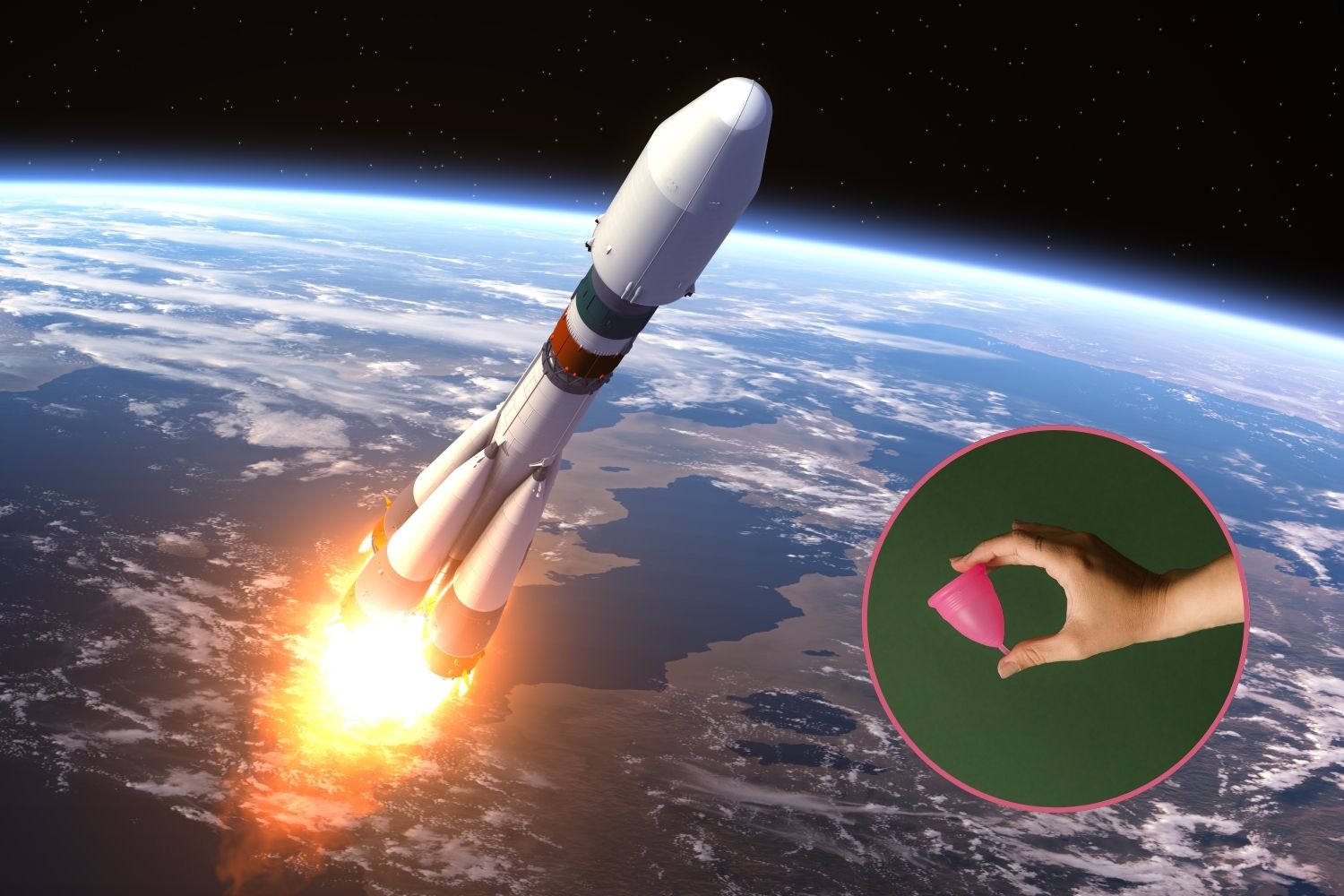Researchers successfully tested menstrual cups in suborbital flight, proving their viability in space. This opens new options for sustainable, dignified menstrual care beyond Earth.

There’s something quietly revolutionary about talking openly about menstruation in space. For decades, it’s been there, lingering in the background of conversations about human spaceflight—ignored, sometimes laughed off, and rarely studied with the seriousness it deserves.
And yet, nothing has ever really stopped women from going to the Moon—least of all their periods.
Menstrual blood management may seem like a logistical hurdle in spaceflight, but it’s far from insurmountable. The real problem lies elsewhere: menstruation has remained, even in orbit, a taboo subject, often sidelined to the detriment of female astronauts.
Back in 2022, from the International Space Station itself, Italian astronaut Samantha Cristoforetti offered a matter-of-fact explanation:
“Exactly as we do on Earth, we have tampons and pads for every need and preference.”
It was simple, even mundane—because it should be. But managing menstruation in space still deserves better tools and more sustainable solutions, especially now that we’re talking about long-term lunar bases and multi-year missions to Mars.
Why menstrual health in space matters — and needs attention
The issue isn’t new. As far back as 1983, during Sally Ride’s historic Space Shuttle flight, NASA famously asked if she’d need 100 tampons for a one-week mission. It would be laughable if it weren’t so telling.
Since then, most astronauts have opted for hormonal birth control to suppress menstruation entirely during missions. It’s a pragmatic solution—no mess, no waste, no mid-mission hassle. But it’s also not ideal for everyone, and certainly not a one-size-fits-all fix.
The longer the mission, the more the risks stack up. Hormonal suppression has known health consequences: blood clots, reduced bone density, and other complications—issues that are only magnified in microgravity, where astronauts already face accelerated bone loss. The 2023 NASA Decadal Survey notes that the long-term effects of hormone suppression in space remain largely unknown.
With future missions likely lasting years or even decades, it’s clear that women need better, more autonomous choices.
And yet, disposable products like pads and tampons are no real solution either. They’re bulky, they generate waste, and they must be packed—a logistical nightmare when launching every kilogram (2.2 pounds) costs thousands of dollars.
So what about menstrual cups?
Enter the menstrual cup: small, reusable, low-waste
On Earth, menstrual cups have quietly become a favorite among many for their low environmental impact and cost-effectiveness. They’re small, discreet, reusable, and—critically—don’t produce any waste.
But in space? Until recently, no one had ever tested one in flight.
That’s changing thanks to AstroCup, a fascinating experiment led by Ligia F. Coelho at Cornell University. In October 2022, as part of a European competition, the team launched four commercially available menstrual cups aboard the Baltasar rocket. Two cups stayed on the ground as controls, while the other two were sent skyward on a 9-minute suborbital flight, reaching an altitude of over 1.9 miles (3 km).
During the flight, the cups endured forces 16 times Earth’s gravity, fluctuating temperatures (between 90°F and 93°F or 32°C–34°C), humidity levels dropping to 40%, and pressures lower than 10 psi (70,000 Pa). Not exactly a Sunday picnic.
The verdict? They held up perfectly.
No signs of structural wear. No leaks, not even when tested with water and glycerol. Even under extreme stress, rapid temperature shifts, and intense pressure changes, the cups remained sealed and intact.
This research, now available on arXiv, opens the door to a future where menstrual cups may become the standard in space missions—cutting waste, saving room, and giving astronauts greater control over their own health.
Challenges ahead: gravity, cleaning, and cycles
Of course, this is just the beginning. The AstroCup test happened on Earth, in Earth gravity. That’s helpful, but not enough.
The Moon has only one-sixth of Earth’s gravity; Mars has about one-third. These differences matter. In lower gravity, fluid behaves differently. Removing and reinserting a menstrual cup might not be as predictable—or as tidy.
There’s also the question of cleaning and reusing cups on longer missions. How do you sanitize them safely in space? How do you store them between uses? These aren’t trivial issues.
Future studies will need to test the cups over multiple cycles, under real mission conditions. But even with all that uncertainty, this experiment marks an important step forward—not just scientifically, but culturally.
Because what really matters here isn’t just engineering or biochemistry. It’s dignity. It’s acknowledging that menstrual health is astronaut health, and it deserves the same level of rigorous attention and innovation.
And maybe—just maybe—launching a few menstrual cups into space is what it takes to finally talk about it.
